Posts Tagged ‘Boston’
Snow Plow Accidents Have Killed Two People in Boston Area
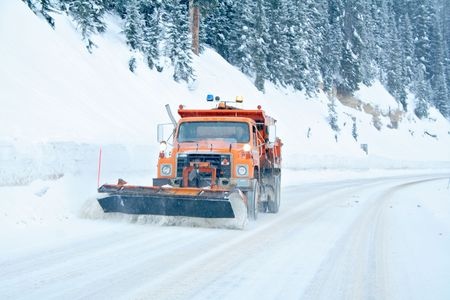 During the past few weeks, snow plows have had little rest in the Boston area and Central Massachusetts. For most of us, they have been part of the background noise of a harsh winter and we have not even noticed them. But as of this week, two pedestrians have died as a result of snow plow crashes in the Boston area. Please be aware of the risks and talk to your family members about how you can stay safe.
During the past few weeks, snow plows have had little rest in the Boston area and Central Massachusetts. For most of us, they have been part of the background noise of a harsh winter and we have not even noticed them. But as of this week, two pedestrians have died as a result of snow plow crashes in the Boston area. Please be aware of the risks and talk to your family members about how you can stay safe.
On Monday afternoon, a 60-year-old employee at a Whole Foods store in Medford was struck and killed while walking across the store’s parking lot. The employee was just leaving work. The area was not open to the public at the time. The snow plow was operated Yerardi Landscape and Design of Medfield, authorities said. The snow plow accident remains under investigation by Medford Police and the Massachusetts State Police.
A week ago, a 57-year-old Weymouth woman was struck and killed by a snow plow driver who was clearing the parking lot outside her condominium complex, Tara Gardens. The driver had just cleared the woman’s parking space for her and a friend told The Boston Globe she had gotten out of her vehicle to ask him not to block her vehicle in as he left. Weymouth Police and the Norfolk County District Attorney’s office are investigating the snow plow death.
We share a few safety tips:
1) Listen to Advisories. Follow the recommendations of state and local officials about when it is best to avoid walking or driving outside.
2) Wear Neon-Colored Vests and Bright Clothing. If you are walking in the street, a neon vest or bright clothing should be a requirement, even during the day. You want snow plow drivers, as well as other drivers, to see you.
Keep a vest in your car. You can use your vest when walking from your car to your destination. It may also come in handy someday if you break down.
3) Do Not Approach Plow Trucks. Pedestrians should never approach plow trucks. Let them stay focused on removing snow.
4) Contact the Property Owner Instead. If you live in an apartment or condo complex, keep the phone number of your building management company handy on your cell phone. If you have a complaint, take a photo to send to the building owner, who can share it with their plow company.
Do the same if you work at a business office, unless you are the owner; then safe snow removal is your responsibility.
5) Expect Plows Everywhere, Even After the Snow Ends. Expect plows everywhere for a while. Even when it is not snowing, expect plows will be out trimming down high snow banks and opening up narrow roads.
6) Do Not Follow Plow Trucks Too Closely. When driving, stay a few car lengths behind plow trucks. The snow plow could hit something hard unexpectedly and not be able to stop. Avoid passing snow plows.
7) If You Have An Accident with a Snow Plow Truck. If you are driving, make sure you stop in a safe place. As you do, take note of what the plow truck looks like and the license plate if you can do so safely. If the plow driver does not stop, immediately notify the local police department to file a car accident report.
Will It Ever Stop Snowing in Massachusetts?
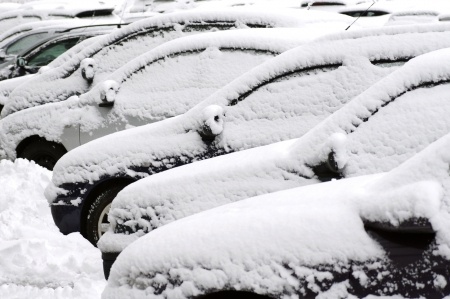
More snowfall today just means more frustration for many of us in Massachusetts. Before today, the Boston area had already seen more than 53 inches of snow this winter, 10 inches more than the total annual average. Worcester is also close to setting a record, recording 72 inches, just four inches away.
Much of the snow has fallen hard during the past two weeks, during the Blizzard of 2015 and other storms. A Washington Post headline summed it up best: “Boston’s record-setting snow blitz – a winter’s worth of snow in less than 10 days.”
Those 10 days should be done now. But Mother Nature just keeps throwing down snow, though she gave the Patriots a reprieve, allowing them to hold their Super Bowl parade in Boston this week. But even the professional football team had to postpone a day to avoid the bitter cold and to let the City of Boston catch up on the clean-up.
More snow is expected this weekend. A few things to remember:
Clearing Snow from Your Property. Homeowners in Massachusetts have a responsibility to clear the snow and ice from their driveways, walkways and other areas of their property. It is important to make sure your family and others, such as friends, postal carriers and delivery workers, can safely visit your property without slipping and falling.
If someone slips and falls on your property, you could be held liable for damages, even if they are uninvited. For a long time, Massachusetts law regarding snow and ice injuries exempted property owners from liability if someone was injured as a result of snow that naturally accumulated and had not been cleared. But in 2010, the Supreme Judicial Court overruled this nearly century old rule. There is now a clear directive that Massachusetts property owners must remove snow and ice. The case is Papadopoulos v. Target Corporation, SJC-10529 (July 26, 2010). Here is a past blog and a Lawyer Alert we wrote on the ruling.
Snow Blower. Make sure you read the instructions and understand your snow blower before using it in heavy snow conditions. If the snow blower is jammed DO NOT attempt to clear it by hand. Even if the blower is not running, it can have stored up mechanical energy that can deliver devastating injuries. Check with the manufacturer and the Consumer Product Safety Commission at the start of each winter to see if there have been any product recalls.
Here is a resource for safe use of snow blowers.
Shoveling Snow Safely. While you must clear the snow, you also have to be safe. Snow removal can lead to injuries, some minor and some very serious, such as heart attacks, dehydration, pulled muscles, broken bones from slip and falls and frostbite. Always consult with your doctor if you concerned about your ability to undertake this strenuous exercise.
If you shovel, drink plenty of water, stop periodically to stretch and dress in layers so you can easily remove one if you get overheated. Try to push the snow, rather than lift it, when you can. Here is an article about shoveling snow safely.
Driving and Taking Public Transportation. Be patient. Limit your time on the road if you can. The Governor of Massachusetts declared a state of emergency and travel ban during the recent blizzard. Many employers closed their offices then and since on other days of heavy snowfall.
When you have to travel, consider public transportation when you can or stagger your work day schedule if it helps and your employer allows this.
If you ride the MBTA, monitor the website, app or local TV stations. Red Line and Orange Line commuters faced significant delays this week, with 40 percent of the cars disabled for mechanical problems. Many commuters were left standing outside in the cold, waiting for trains or had to take buses. Systems are failing all over the state.
Walking. The snowbanks are tall and the roads narrow in many areas, making it hard to walk. If you must walk outside, wear visible clothing, including a bright safety vest if you have one, so you are visible to drivers. Walk on sidewalks and carefully look around snowbanks before stepping into the streets, even at crosswalks.
Watch out for regular traffic, as well as snow plows. A Weymouth woman was killed in a pedestrian accident this week when she was struck by a plow driver at her condominium complex.
Carry your cell phone in case of an emergency but do not use it while walking. Also do not wear headphones and listen to music when trying to face the complications of winter travel.
Read More
Honda Motor Co. Fined $70 Million for Failure to Report Injuries and Deaths
 Last week we learned the National Highway Traffic Safety Administration (NHTSA) issued Honda Motor Co. two safety fines totaling $70 million. The fines were announced last week but had been issued before the New Year. These are the largest penalties the NHTSA could impose. With them, automakers finish the year paying $126 million in civil penalties, the most ever for one year. The amount also exceeds the total amount collected in all 43 years of the NHTSA’s operation.
Last week we learned the National Highway Traffic Safety Administration (NHTSA) issued Honda Motor Co. two safety fines totaling $70 million. The fines were announced last week but had been issued before the New Year. These are the largest penalties the NHTSA could impose. With them, automakers finish the year paying $126 million in civil penalties, the most ever for one year. The amount also exceeds the total amount collected in all 43 years of the NHTSA’s operation.
Honda’s Fines
- Honda was fined $35 million for failure to report submit early warning reports (EWR reports) identifying potential or actually safety issues. The company failed to report 1,729 death and injury claims between 2003 and 2014.
- Honda was fined a second $35 million for failure to report certain warranty claims and claims related to its customer satisfaction campaigns, in which a manufacturer quietly agrees to fix defects on cars even beyond the normal warranty period.
Honda was ordered to submit injury reports as part of the NHTSA’s investigation on defective Takata airbags last year. Some of the drivers who died as a result of the Takata airbag defects were driving Honda vehicles. The airbag defects are linked to at least five deaths and dozens of injuries in the U.S. Automakers have recalled nearly 14 million cars with these airbags worldwide. Takata, a Japanese company, has limited its recalls to Florida, Hawaii and other warm weather states, despite pressure from the NHTSA to expand the recall nationwide.
Other Companies Which Were Fined
Among the companies the NHTSA fined last year: Gwinnett Place Nissan, Ferrari S.p.A. and Ferrari North America, Chapman Chevrolet LLC, Hyundai Motor America, General Motors Company and Prevost and Southern Honda Powersports.
Then of course there was General Motors, which was fined $35 million for how it handled a recall of more than 2 million vehicles with ignition switch problems. It also paid a separate $441,000 fine for failure to fully respond to a special order by a specified due date.
Toyota is not on the list of companies which paid civil penalties in 2014. But it paid the U.S. government a $1.2 billion criminal fine for it actions during a safety investigation.
Proposed Safety Changes for 2015
In the New Year, the U.S. Department of Transportation and NHTSA are proposing to increase the maximum fine for auto safety violations from $35 million to $300 million. The agencies also want the NHTSA to have additional authority to compel companies to recall unsafe products.
Related:
U.S. Department of Transportation Fines Honda $70 Million for Failing to Comply with Laws That Safeguard the Public, National Highway Traffic Safety Administration.
Read More
City of Boston Will Inspect Addresses Where Students May Be Living in Overcrowded Conditions
 The City of Boston has identified 580 potentially overcrowded student apartments across the city from data provided by colleges and universities, The Boston Globe recently reported. City inspectors will now investigate whether the units are violating city zoning rules, which bar more than four full-time undergraduate students from sharing the same apartment.
The City of Boston has identified 580 potentially overcrowded student apartments across the city from data provided by colleges and universities, The Boston Globe recently reported. City inspectors will now investigate whether the units are violating city zoning rules, which bar more than four full-time undergraduate students from sharing the same apartment.
The city recently collected more than 25,000 student addresses from 31 colleges and universities so it can investigate potential apartment safety violations and overcrowding. If overcrowding is found, city officials plan to work with landlords and universities to move students to safer, alternate housing.
In 2013, Boston University student Binland Lee died in an apartment fire in Allston. She had been living at the Linden Street building with more than a dozen other people, a violation of city zoning rules. The Boston Globe Spotlight team later reported the property had been converted to a two-family home after a previous fire in the 1990s. This move blocked off a central staircase and restricted access. The building owner, Anna Belokourova, was later cited for running an illegal rooming house and not obtaining the permits needed to create bedrooms in the basement.
The Lee family has filed a wrongful death and premises liability lawsuit against Belokourova as well as Gateway Real Estate Group, which rented the apartment to her and six other housemates. Attorney Ronald E. Gluck of Breakstone, White & Gluck represented another woman who was seriously injured in the same fire.
In 2014, the Boston Globe Spotlight team investigated and found other instances of unsafe and crowded conditions for Boston students. It surveyed 266 students who lived off-campus in Boston and found nearly one-third were living in units with at least five undergraduate students, a violation of city zoning law.
Also from the survey:
- 25 percent of students reported having trouble reaching their landlord to report safety concerns
- 20 percent reported living without functioning smoke alarms
- 33 percent reported a lack of heat in their apartments
As these safety violations happen, more students are coming to Boston and living off-campus than in the past. Colleges are facing a space crunch and neighbors have opposed many of their efforts to build new dorms. The Boston Globe estimated more than 45,000 Boston students lived in off-campus housing in 2013, a 36 percent increase from 2006.
Our attorneys have represented Boston college students and other tenants who have suffered serious injuries as a result of housing code violations and overcrowding conditions. Here are summaries from two recent cases:
Overcrowded Student Housing Fire in Allston, Massachusetts
Our attorneys represented a woman who was seriously injured in a 2013 fire in an illegal apartment in Allston, Massachusetts. More than a dozen college students were living at the home in violation of city zoning ordinances. Read about this case.Students Injured in Escape from Quick-Spreading House Fire
Our attorneys represented one of two college students who were seriously injured a single-family home fire in Boston. One student suffered a brain injury when he jumped from a third-floor window to escape and landed on a concrete driveway. The other student broke her back and injured her ankle when she jumped off from the second floor. The case was settled at mediation. The case was reported by Massachusetts Lawyers Weekly on May 29, 2014. Subscription required.
Somerville, Cambridge and Boston Are Among the Top U.S. Cities for Bike Commuters, Report Says
The City of Somerville will finish 2014 out front among cyclists. But Cambridge, Boston and Newton are close behind.
The League of American Bicyclists recently recognized Somerville as the Top Bike Commute City in the East. In Somerville, 7.8 percent of people now commute by bike, a larger share than anywhere in the East, including New York City or Philadelphia. In Massachusetts, Cambridge, Boston and Newton also made the Top 20 list.
The League of American Bicyclists’ calculated the figures based on U.S. Census Bureau Statistics, taking into account a city’s population and number of cyclists. The League of American Bicyclists concentrates on counting everyday bike commuters who ride as their primary mode of transportation, not those who only commute a few days a week or those who ride bikes to other transit.
Nationwide, Somerville reported the fifth highest share of bike commuters. Davis, California had the largest share, with 24.5 percent. Boulder, Colorado was second with 11 percent.
In the East, Cambridge came in a close second to Somerville, counting nearly 6.5 percent of residents as bike commuters. Combined, the two neighboring cities have a population of 186,090 and 7,467 bike commuters.
Still Boston is the larger city, with nearly 645,000 residents, and has the highest number of actual bike commuters in the region. It was listed seventh on the American League of Bicyclists’ list, with nearly 2 percent of residents counted as bike commuters. This works out to roughly 6,660 people. Among U.S. cities, Boston is the ninth fastest growing spot for cycling, with commuters up 122 percent from 1990 to 2013.
Cycling is also growing across Massachusetts. The number of people commuting by bike here has increased over 100 percent since 2005, compared to 46 percent for the average U.S. state. We are eager to see what 2015 brings.
Cycle Tracks For Somerville, Cambridge and Boston
We expect to learn a lot more about cycle tracks in 2015. Boston and Cambridge both have cycle tracks, which go a step beyond traditional bike lanes and separate cyclists from traffic with curbing, shrubbery or flexposts. Many bike advocacy groups see these as a critical tool in reducing bike accidents and injuries.
Somerville is planning cycle tracks along Beacon Street, through to the Cambridge border. In recent years, the state Department of Transportation has reported the highest number of bicycle accidents in Massachusetts in this area.
Cambridge was one of the first communities in the country to build a cycle track and now has one on Vassar Street and Concord Avenue from the Alewife Brook Parkway to Blanchard Road. The recent Western Avenue reconstruction project plans also incorporated a cycle track, as well as special bicycle traffic signals.
Boston built cycle tracks on Western Avenue and Commonwealth Avenue. The city’s 5-year action plan calls for the construction of 21 miles of cycle tracks. High priority areas include the streets around the Boston Public Garden, Boylston Street in Back Bay and Malcolm X Boulevard and Massachusetts Avenue in Roxbury.
Hubway. We are always watching to see what comes out of Hubway. The City of Boston launched the popular bike share program in July 2011 and each year it has expanded and gotten residents, workers and visitors excited about cycling (and encouraged bike helmet use, which is important). The program now has 1300 bikes at 140 stations in Boston, Somerville, Cambridge and Brookline, more than doubling its original size in just a few years. Many stations have closed down for the winter, except in Cambridge. But we will watch for the bike program next Spring.
Boston Truck Ordinance. A few weeks ago, the Boston City Council approved a truck safety ordinance requiring city-contracted trucks to be outfitted with side guards, convex mirrors and blind-spot awareness decals. This first-in-the-nation measure was passed to reduce pedestrian and cycling accidents. Many locally and nationally are watching as the city begins enforcement.
Community Bike Programs. Boston has an active network of cycling groups and committees. If you are a cyclist, we encourage you to seek one out in 2015 or attend an event at Bay State Bike Week in the spring. Here is a list.
Bike Helmet Donations. Watch for us in 2015 too. Breakstone, White & Gluck will again partner with local organizations and committees to donate bike helmets to local children. In 2014 we donated over 2,000 helmets to kids and programs around the state. 2015 will be our third year of making these donations through Project KidSafe, our community service program. Read about our partners.
Related:
“Where We Ride,” American League of Bicyclists.
Read More
Make Sure Not to Buy from the “10 Worst Toys” of 2014 List
Before you shop, please check out the Worst Toys of 2014 list by W.A.T.C.H. Since last year, there have been at least 17 toy recalls in the U.S. and Canada, accounting for 5 million defective toys, reports the watchdog group which releases its list annually.
Shop carefully, even at familiar and trusted stores. Of course you should avoid the toys listed below. But make your own judgments on the safety of the toys you are considering. The main things to beware of are:
- Marbles and small pieces
- Sharp edges
- Small magnets
- Flimsy toy accessories or pieces which are loosely attached
- Toys with strings (such as musical instruments and necklaces)
- Toys which shoot sharp projectiles
Also, remember to buy toys which are age-appropriate, read the warnings on the toy box and watch out for toy packaging materials. Toys and many products come with an almost-invisible plastic lining on mirrors, digital screens and other pieces. Many also come with a lot of plastic wrap. These are all choking hazards and you should remove them before giving toys to children.
Here are the W.A.T.C.H. nominees for the “10 Worst Toys” of 2014.
1) Air Storm Firetek Bow
This toy is designed for children 8 years and older, but it shoots arrows up to 145 feet high in the air and can cause eye injuries. It has glow pieces and is marketed for day or night use, thought it warns against use in the “complete dark.” Finally, the packaging carries several other warnings, more than most people want when buying a toy. It sells for under $25 at Walmart and Amazon.com.
2) Radio Flyer Ziggle
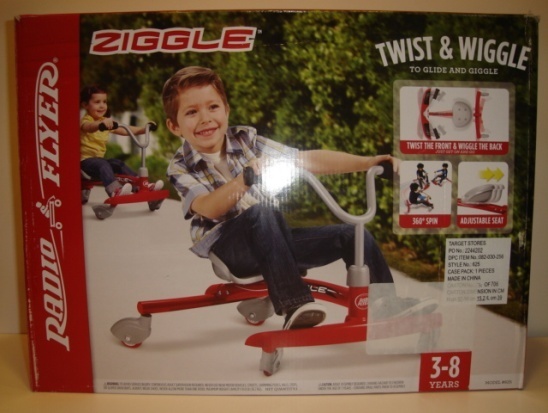 The seat on this bike is too low, just 8 inches off the ground, W.A.T.C.H. said. The bike’s packaging also features young children who are not wearing bike helmets, which puts them at risk for head injuries. The $39.99 bike is sold at Target, Toys R Us and Amazon.com and is recommended for children ages 3 to 8 years old.
The seat on this bike is too low, just 8 inches off the ground, W.A.T.C.H. said. The bike’s packaging also features young children who are not wearing bike helmets, which puts them at risk for head injuries. The $39.99 bike is sold at Target, Toys R Us and Amazon.com and is recommended for children ages 3 to 8 years old.
3) Catapencil
This pencil is also a catapult. The packaging encourages children to enjoy target practice from their desktops and reads, “Because the pencil is mightier than the sword.” There are no safety warnings or age recommendations. This $3.99 toy is sold at Amazon.com, Ebay.com and Learning Express.
4) Alphabet Zoo Rock and Stack Pull Toy
This toy has a 20-inch cord, which is eight inches longer than industry safety standards. It creates a strangulation risk for young children and the manufacturer even warns parents about this risk on the packaging. This toy is sold for $19.99 at Amazon.com, Toys R Us and Magic Beans stores.
5) SWAT Electric Machine Gun
Junxing Toys Industrial Co. warns buyers on the packaging that its toy gun may be mistaken for an actual firearm by law enforcement officers and others. W.A.T.C.H. rightfully says there is “no excuse for outfitting children with realistic toy weapons designed to produce potentially dangerous and unnecessary thrills.” The recent killing of a 12-year old, who was carrying a toy gun mistaken in for a real gun, in Cleveland is a serious reminder of this risk.
6) Wooden Instruments
This toy is designed for children 12 months and older, but includes a 4 ½ inch long drumstick which children can mouth and get lodged in their airway. Additionally, there are no warnings on the toy, which is sold at Walmart.
7) Bottle Rocket Party
This toy makes use of projectiles which can strike and injure a child. There are safety goggles advertised on the packaging, but they are not packed in the box. This toy by Norman & Globus is recommended for children age 8 and older and is sold for $14.99 at Walmart.com, Amazon.com and the Village Toy Shop.
8) Lil’ Cutesies – Best Friends
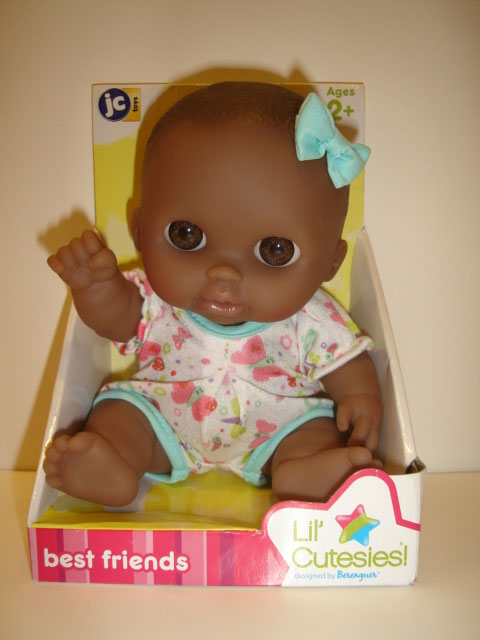 While advertised as the “perfect friend for your little one,” this toy is dangerous, according to the W.A.T.C.H. report. The decorative bow can detach from the doll’s head and pose a choking hazard. The toy is designed for children age 2 and older. It is sold for $7.99 or less at Kmart, Toysrus.com and Amazon.com.
While advertised as the “perfect friend for your little one,” this toy is dangerous, according to the W.A.T.C.H. report. The decorative bow can detach from the doll’s head and pose a choking hazard. The toy is designed for children age 2 and older. It is sold for $7.99 or less at Kmart, Toysrus.com and Amazon.com.
9) True Legends Orcs Battle Hammer
This hammer is marketed to children as young as 3 years old, yet it comes with a hammer which stretches nearly 2 feet. Do not look for safety warnings and instructions–there are none! It is distributed by Toys R Us and sold at stores for under $15.
10) Colored Hedgehog
The hedgehog’s hair can be easily pulled out, posing a risk for ingestion and aspiration injuries, W.A.T.C.H. says. This infant toy is sold for $10.99 at Toys R Us.
Read the full Worst Toys of 2014 list. Photo credit on this blog: W.A.T.C.H. and the Worst Toys of 2014 report.
Read More
Shop Carefully for Strollers, Car Seats and Holiday Gifts for Families
 Ready or not, the holiday shopping season begins in earnest this week. Enjoy shopping for loved ones, but remember to buy with caution, especially when selecting toys and products used by young children. The Consumer Product Safety Commission (CPSC) recalled millions of unsafe toys this year, and also many of the most basic children’s products, including car seats, strollers and furniture. Shoppers should closely examine every purchase. Here are a few holiday shopping tips:
Ready or not, the holiday shopping season begins in earnest this week. Enjoy shopping for loved ones, but remember to buy with caution, especially when selecting toys and products used by young children. The Consumer Product Safety Commission (CPSC) recalled millions of unsafe toys this year, and also many of the most basic children’s products, including car seats, strollers and furniture. Shoppers should closely examine every purchase. Here are a few holiday shopping tips:
Check for recalls. Search the CPSC database to see if a specific product has been recalled. You can also search by company.
Here are some of the important ones to remember:
Graco Recalls. Graco recalled millions of car seats earlier this year because of sticky-buckles which were trapping children in the seats. Just last week, it also recalled 4.7 million defective strollers which can cause finger amputation. Graco recalled the 11 stroller models after 10 fingertip amputations and one finger laceration. The strollers were sold from 2010 until earlier this month at a number of retailers, including Target, Toys R Us, Walmart, Amazon.com and Walmart.com. Read the recall notice.
Furniture Recalls. Common home furniture also caused child injuries this year. In August, Ace Bayou recalled 2.2 million bean bag chairs after two children unzipped them, crawled inside and suffocated to death. Anyone with one of these defective chairs should call the company for a repair kit to disable the zipper.
Another serious recall impacted in Massachusetts. Earlier in the year, Lane furniture renewed its recall of wooden cedar chests after two children in Franklin became trapped in one and suffocated. The children had apparently been playing hide-and-seek and became locked inside. The company first recalled the chests in 1996, but millions of the defective chests are believed to still be in use without the necessary repair.
In the Massachusetts case, the children’s family is believed to have bought the used chest at a second-hand store more than a decade ago. Second-hand sales are challenging to regulate, as are families and friends who pass along used products to each other. This makes it important to know the characteristics of an unsafe product as well as specific products which have been recalled.
Buy age-appropriate. Read the age recommendation on toys and children’s products. Consider a child’s family. If you are buying for a child with younger siblings, buy something which is safe for all ages in the household.
Be careful buying online. After a product is recalled, it is against the law to sell it in stores or online. But some auction and online listing websites do not police private sellers closely. Avoid these sites when holiday shopping for children.
If you purchase through a merchant website such as Amazon.com, make sure you receive the right product and that it has the same age appropriate label and pieces as shown online.
Beware of suffocation and choking hazards. Avoid balloons, marbles and toys with small pieces which children can put in their mouth. Also avoid small magnets. Remember these things come with many toys, but they also come from other gifts and products that enter a home. For instance, the magnet desk sets which were so popular many years ago for adults turned out to be extremely dangerous for children. In some cases with the Buckyball magnet sets (which have been recalled), children found small magnets years after families brought the set into their home in hard-to-reach places, such as under a couch. Our point is: Please consider every gift carefully.
Read More
Report: Helmet Use Encouraged After Increase in Cyclist Deaths
 After years of decline, a new report reveals that there has been an increase in the number of cyclists killed in motor vehicle accidents since 2010.
After years of decline, a new report reveals that there has been an increase in the number of cyclists killed in motor vehicle accidents since 2010.
The Governors Highway Safety Administration (GHSA) released the, “Spotlight on Highway Safety: Bicyclist Safety” report on Oct. 27th. The report shows cycling deaths have increased 16 percent from 2010 to 2012, from 621 to 722 cyclist fatalities. During that time, Massachusetts saw the numbers almost double, from seven cyclist deaths in 2010 to 15 in 2012. The majority of cyclist deaths came from six states, including California, Florida, Illinois, New York, Michigan and Texas.
During this period, other deaths in motor vehicle accidents increased by just one percent.
Two thirds or more of cyclists killed in 2012 were not wearing bike helmets, “a major contributing factor” in deaths because many cyclists suffer serious head injuries, the GHSA said.
More details from the report:
Bike helmet use. Citing 2012 Fatality Analysis Reporting (FARS) data, the GHSA report showed 65 percent of cyclists who died in 2012 were not wearing a bike helmet. Meanwhile, just 17 percent of cyclists were confirmed to be wearing one. Helmet use was unknown for the remaining 18 percent.
Twenty one states, including Massachusetts, have laws mandating bike helmet use for children. But none requires helmet use for adult riders and the GHSA said use has to be encouraged.
In Boston, city officials have raised the idea of mandating bike helmet use. It would not be the first city to do so. Sykesville, Maryland requires cyclists of all ages to wear bike helmets. But such ordinances are largely controversial. Dallas, Texas passed a law mandating helmets for all ages, but city officials revised it this summer, limiting it to cyclists who are 17 and under.
As it stands in Boston, riders of the Hubway bike share must agree to wear bike helmets when they sign up. The City of Boston has actively promoted bike helmet use over the years through advertising campaigns and community outreach programs.
Breakstone, White & Gluck has also worked to increase bike helmet use among children in Massachusetts. Over the past two years, we have donated 3,000 bike helmets through community organizations. We are proud of this work and will be back in 2015.
Our program partners include: Boston Bikes’ Roll It Forward, a program run by the City of Boston, Worcester Earn a Bike, CYCLE Kids, Cambridge Public Schools, Somerville Public Schools, Bikes Not Bombs, Framingham Bicycle and Pedestrian Committee, East Arlington Livable Streets and Arlington Public Schools, Watertown Bicycle and Pedestrian Committee, Westborough Bicycle and Pedestrian Committee, Somerville Kiwanis, Dedham Bike Rodeo, Boston Cyclists Union, Arlington Town Day, Westwood Bicycle and Pedestrian Committee, Lexington Bicycle Advisory Committee and the Ashland Farmer’s Market and iCan Shine Camp of Arlington.
State safety efforts. The GHSA touched on safety improvements which communities can make and strongly encouraged development of cycle paths. These go a step further than traditional bike lanes and physically separate motor vehicle traffic from cyclists on the road with flexible posts or other safety measures.
If communities cannot add cycle paths, the GHSA suggests adding marked bike lanes, bike boxes which designate space in a lane for bikes at intersections, and separate bike traffic signals with advance lights for cyclists.
Boston has a 5-year action plan to build 21 miles of cycle tracks in various areas of the city.
Read the full report, “Spotlight on Highway Safety: Bicyclist Safety.”
Read More
Brockton Pedestrian Accidents Surge, City Officials Unveil Safety Plan
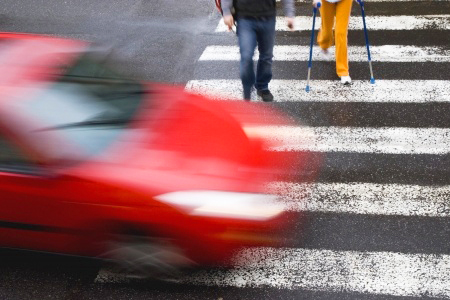 The mayor of Brockton has announced a plan to improve safety for those walking in the city. The city has seen an increase in pedestrian accidents, which have recently killed 8 pedestrians and injured 75 others. Seven of the eight pedestrian deaths have occurred since August 12.
The mayor of Brockton has announced a plan to improve safety for those walking in the city. The city has seen an increase in pedestrian accidents, which have recently killed 8 pedestrians and injured 75 others. Seven of the eight pedestrian deaths have occurred since August 12.
Two victims were children, and in one case, police are still searching for the hit-and-run driver. In 2013, the city saw one fatal pedestrian accident.
Mayor Bill Carpenter proposed the safety plan on Monday, which draws on resources from a number of state and local agencies, including the Massachusetts State Police, Brockton Police, the city’s Board of Health, the Massachusetts Department of Transportation, the Safe Routes Alliance and Brockton Area Transit.
His plan will focus on three areas: engineering, enforcement and education. Some of the measures still require approval from the city Finance Committee.
Educational Awareness Campaign. The city will launch a pedestrian safety awareness campaign to educate both drivers and pedestrians. One focus will be to reduce use of electronic devices and cell phones by everyone on the road. Public service announcements, video documentaries and other safety materials will be introduced to students in Brockton Public Schools.
Increased Walking Patrols. These will be expanded in high-traffic areas, to allow officers to provide pedestrians and cyclists with safety information when they put themselves in harm’s way.
Increased Traffic Patrols in High-Crash Areas. The Massachusetts State Police will work with Brockton to increase patrols in high traffic areas.
Scarecrow Patrol Cars. Brockton Police will deploy “scarecrow” cruisers at some dangerous intersections. These have no officers, but are meant to put drivers who do not know that on alert.
Clearing Sidewalks. The city’s Board of Health will conduct enforcement to make sure sidewalks are clear and can be safely used by pedestrians.
Traffic Signals. The city will consider adding pedestrian countdown features to the traffic signals on Belmont Street. At the same time, the Mass Department of Transportation is now conducting a review of traffic signals across the city.
Brockton is not the only community which has seen an increase in pedestrian accidents. Nationwide, fatal pedestrian accidents increased 6 percent from 2011 to 2012, according to the National Highway Traffic Safety Administration’s most recent figures. More than 33,000 were killed or about one every two hours.
Cyclist accidents are also on the rise, with a 16 percent increase from 2010 to 2012, according to the Governors Highway Safety Administration.
Read More
Former Employees: Takata Hid Airbag Defects
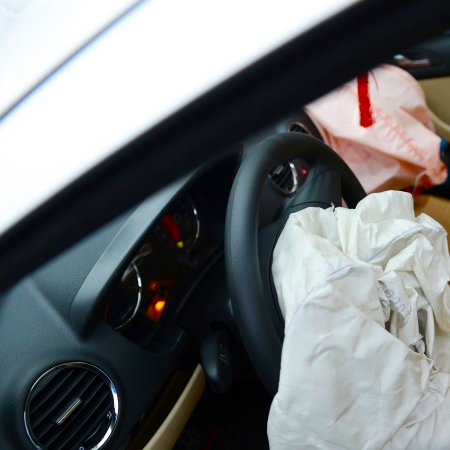 Long before the deaths and injuries, Takata knew its airbags were defective, according to two former employees of the company.
Long before the deaths and injuries, Takata knew its airbags were defective, according to two former employees of the company.
In fact, Takata knew about the defects as far back as 2004, the workers told The New York Times. The Japanese company learned one of its airbags exploded and sent metal debris spewing at a driver in Alabama, then began secret testing at its U.S. headquarters in Michigan. The testing was conducted outside normal work hours and was never disclosed until now. Three months into testing, employees began to theorize the problem was the welding on the airbag’s inflator canister, but the investigation was shut down and employees were instructed to destroy all testing data.
It took Takata four years to report the faulty airbags in a regulatory filing. In November 2008, the first Takata airbags were recalled.
The law requires car manufacturers to report safety defects to the government within five days once they are identified. This year has seen the most auto recalls in U.S. history and some hefty fines for Toyota and General Motors for failing to disclose defects. In March, Japan-based Toyota agreed to pay $1.2 billion to the U.S. government to avoid prosecution for hiding “unintended acceleration” defects. In May, General Motors was ordered to pay a record $35 million civil fine for failing to disclose deadly ignition switch defects.
Starting in 2008, Takata’s airbag recalls continued slowly, then got a big push last month from the National Highway Traffic Safety Administration (NHTSA). NHTSA issued a consumer advisory which urged drivers to immediately check if their vehicle’s airbags had been recalled and arrange for a repair. To date, 11 car manufacturers have recalled more than 14 million vehicles worldwide. Four deaths have been linked to the defective airbags and at least 139 people have been injured.
A few notes about this story:
Check Your Car. Every driver should check if their car has been recalled at SaferCar.gov. You can also read our blog for answers to many common consumer questions. Most impacted drivers will have to wait for replacement airbags so it is best to call your local dealer as soon as possible. Some carmakers are advising drivers not to carry passengers until their airbags have been replaced.
Why the Airbags are Defective. The airbags are defective because they have a steel canister which can crack when the device deploys in a car crash, sending metal, plastic and chemicals exploding at drivers and front seat passengers. The airbags have an inflator, which is comprised of a propellant based on a common compound used in fertilizer.
Honda. One question going forward is: How much did Honda know? This matters because Honda made more than 5 million of the recalled vehicles. The New York Times reports a 2002 Honda Accord was involved in the 2004 accident in Alabama. Honda officials say Takata assured them the accident in which a driver was injured by a ruptured airbag was an “anomaly.” Honda settled the case with the driver but Takata began its own secret testing, according to the employees. The NHTSA has ordered Honda to produce all its documents related to the Takata airbag recall by Dec. 15, so we may learn more then.
About Breakstone, White & Gluck
The Boston product liability lawyers at Breakstone, White & Gluck have over 100 years combined experience representing clients injured by negligence in Massachusetts. If you have been injured, learn your rights. For a free legal consultation, contact us at 800-379-1244 or 617-723-7676 or use our form.

